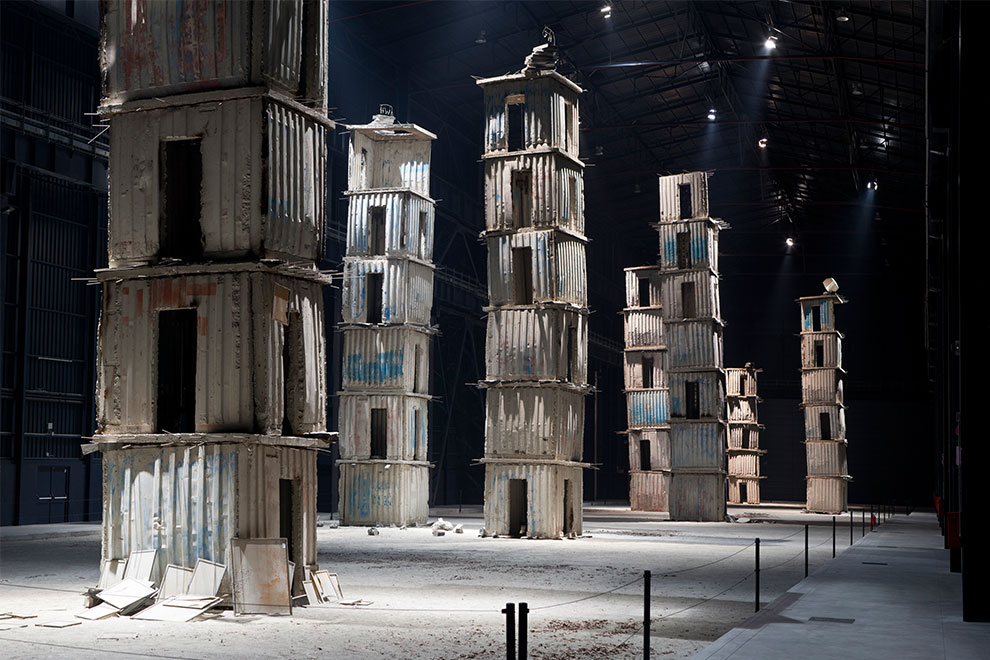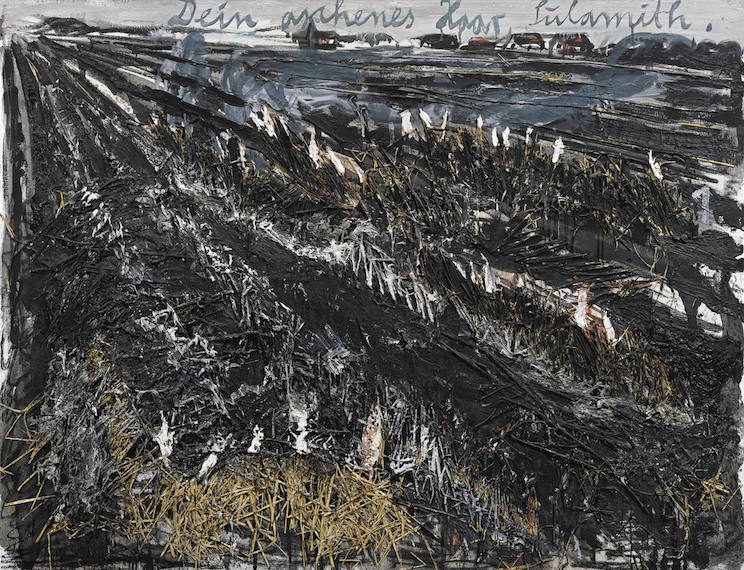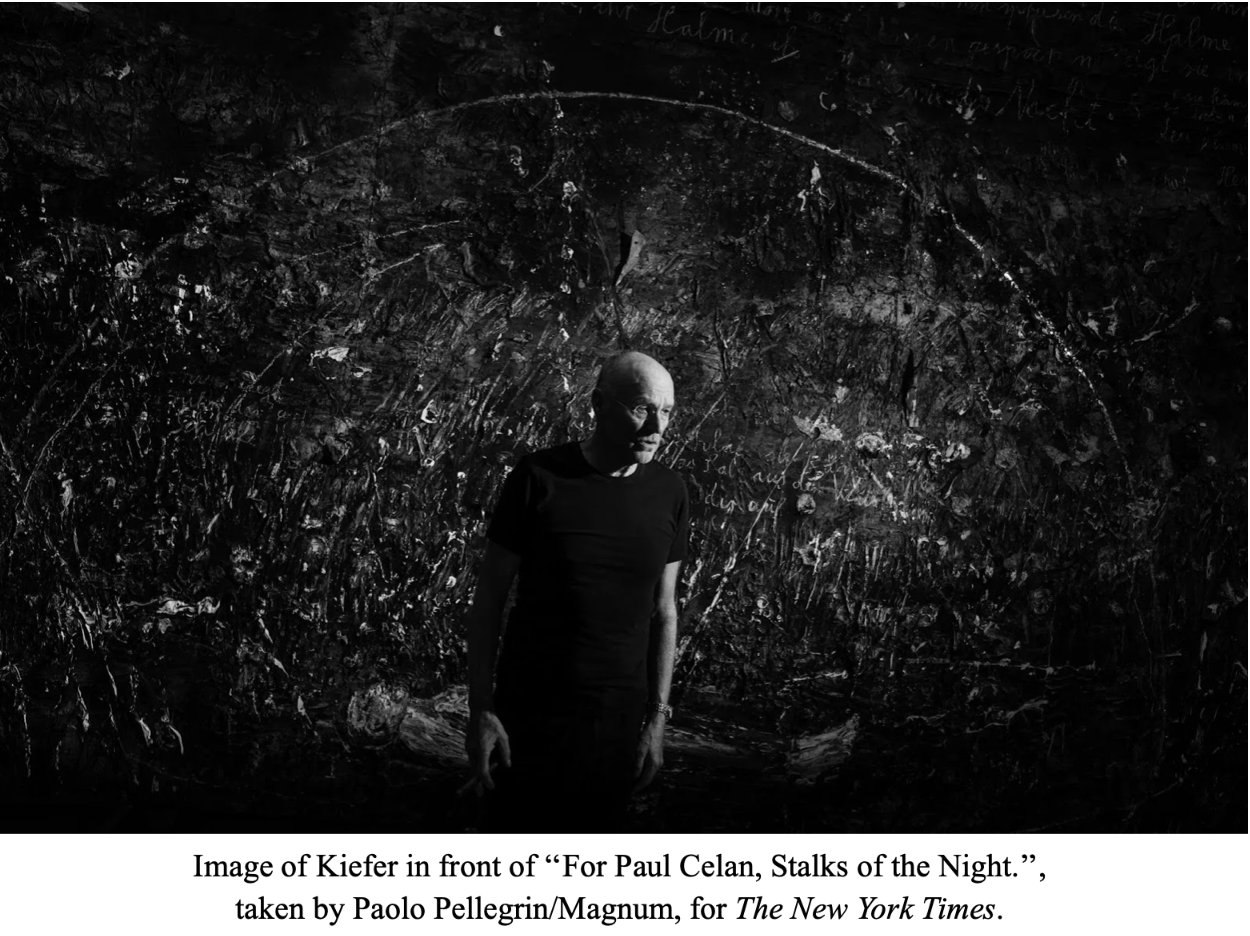Born during the final months of World War II in Donaueschingen, Germany, Anselm Kiefer belongs to the generation of Germans who dealt with the shame and guilt of the Nazi Party’s actions, despite not being directly involved. Currently on display in his own estate in southern France as well as in two U.S. exhibitions, Kiefer’s work is famous for confronting the Nazi past.
The atmosphere of postwar Germany brimmed with discomfort due to the country’s complicated past. Kiefer’s generation watched their country transition into a post-Nazi state, which also led to an absence of their cultural history and social identity. The Second World War was hardly mentioned at school, which only deepened the artist’s curiosity, and thus he aimed to uncover the truth of his country’s hidden past. Kiefer eventually found out that his art teacher and law professors were former Nazis. As he began to unravel the hidden secrets of his world, he began to explore the violence committed by the Nazis through his art.
“I put the contemporary together with the depths of history.”
– Anselm Kiefer
At the beginning of his artistic career he published a series of photographs titled Occupations, which stirred controversy in his country. The provocative work captures Kiefer wearing his father’s military uniform and posing in the Hitlergruß salute in several locations. Though the series heavily differs from the work he’d go on to famously produce, it laid the groundwork for the themes he would continue to explore. When describing his artistic approach, Kiefer expressed: “I was putting myself in the role. I wanted to know what I would have done. Because it is not easy in such times to stand against power, like now in Russia.” However, many misinterpreted the ironic statement he was conveying in his series, and believed he was embracing Nazi imagery. Despite his collection of work being successful in many countries, it didn’t receive the same reception in his homeland Germany. Kiefer expressed his thoughts on the public’s opinion: “They are not hesitant about my work, they are just against it. And now they say I am out of time, old-fashioned.” The negative reception stemmed from the themes of his artwork: many Germans believe his themes are too repetitive and no longer worth pursuing. Despite this pushback, Kiefer continues to explore his country’s traumatic past in his artwork. He took on painting, and began experimenting with materials such as lead and straw in his sculptures.
Being the son of an art teacher, painter and sculptor he had artistic inclinations from an early age. A significant moment that inspired his craft was the night of his birth, when his house was bombed. He had no toys as a child and the area by his house was filled with ruins, which prompted him to collect debris and build a house of his own. “I always built houses, even as a little boy”, he revealed. One of his most prominent works is an installation of discarded ship containers titled Seven Heavenly Palaces, which represent the ruins of Western Civilization following the Second World War. The inside of the towers contains lead, a frequently used material by the sculptor, which he deems as the “material of melancholy.”

Regarded as a big name in contemporary art, he has also made significant contributions to the Neo-Expressionist movement that is characterized by “violently emotive, textural works”. Many of Kiefer’s paintings depict bleak landscapes that similarly transmit the theme of desolation as the works he has created on other mediums.
“For me, a landscape is never a landscape, it’s the memory of history. You see the ruins of history in the landscape.”
– Anselm Kiefer
In one of his paintings, Kiefer incorporated an excerpt from ‘Death Fugue’, a poem created by post-war poet Paul Celan that details the prisoners’ nonstop pain and agony in a concentration camp. Kiefer heavily credits Celan’s poetry, which describe his experience at a concentration camp, as a main source of inspiration for his paintings.

Avoiding the acknowledgement of the Third Reich won’t make Germany’s legacy disappear. Nowadays, many schools actively teach the history of the Third Reich, but the circumstances of Kiefer’s childhood were largely different. After a long time spent pursuing his artistic calling, the artist was able to effectively create works that brought “social issues to the forefront contemporary discussions” and transmit the guilt brought by horrors that can’t be adequately put into words.
Bibliography:
“Anselm Kiefer – Essence-Eksistence.” ARTIPELAG. 25 Nov. 2022.
https://artipelag.se/en/at-artipelag/anselm-kiefer-essence-eksistence/.
“Anselm Kiefer, The Seven Heavenly Palaces, HangarBicocca, Milan.” Aesthetica. 1 Sep. 2015.
https://aestheticamagazine.com/anselm-kiefer-the-seven-heavenly-palaces-hangarbicocca-milan.
“ANSELM KIEFER – The Seven Heavenly Palaces 2004-2015.” Pirelli HangarBicocca. 29 Nov. 2022.
https://pirellihangarbicocca.org/en/anselm-kiefer/.
“Anselm Kiefer: Uraeus: Interview.” Gagosian Quarterly. 11 Feb. 2019.
https://gagosian.com/quarterly/2019/02/11/interview-anselm-kiefer-uraeus/.
Cohen, Roger. “Anselm Kiefer Raises History’s Ghosts.” The New York Times. 18 Nov. 2022.
https://www.nytimes.com/2022/11/18/arts/design/anselm-kiefer.html.
Duncan, Alexandra. “Anselm Kiefer Artist Overview and Analysis.” The Art Story. 08 May 2015.
https://www.theartstory.org/artist/kiefer-anselm/.
Knausgaard, Ove Karl. “Into the Black Forest With the Greatest Living Artist.” The New
York Times. 12 Feb. 2020.
https://www.nytimes.com/2020/02/12/magazine/anselm-kiefer-art.html?action=click&modul
e=RelatedLinks&pgtype=Article.
Lankarani, Nazanin. “In Late Summer, Anselm Kiefer Captures the Harvest.” The New
York Times. 13 Aug. 2020.
https://www.nytimes.com/2020/08/13/arts/anselm-kiefer-salzburg.html?action=click&module=RelatedLinks&pgtype=Article.
“Neo-Expressionism.” Sotheby’s. 29 Jan. 2020.
https://www.sothebys.com/en/art-movements/neo-expressionism.

